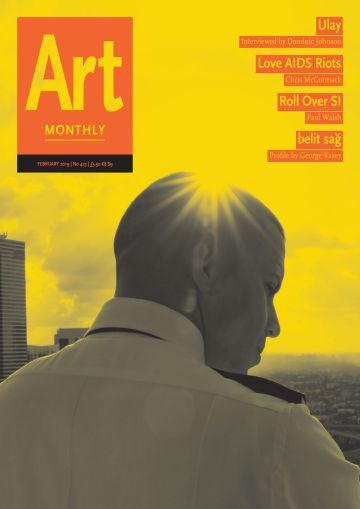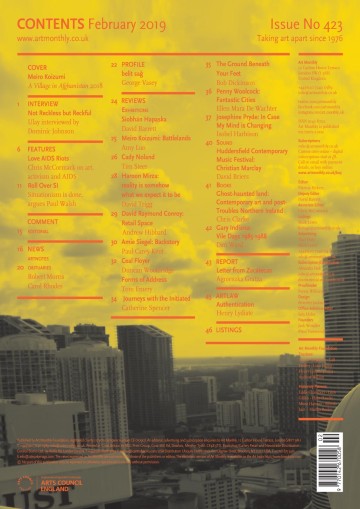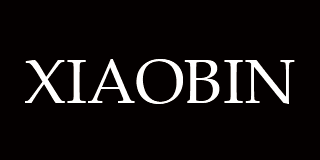Art Monthly 423
February 2019
Ulay
Interviewed by Dominic Johnson
Love AIDS Riots
Chris McCormack
Roll Over SI
Paul Walsh
belit sag
Profile by George Vasey
Buy Now – select:
Want to read this right now?
Get instant access to the entire back catalogue via Exact Editions from only £8.99!
Contents
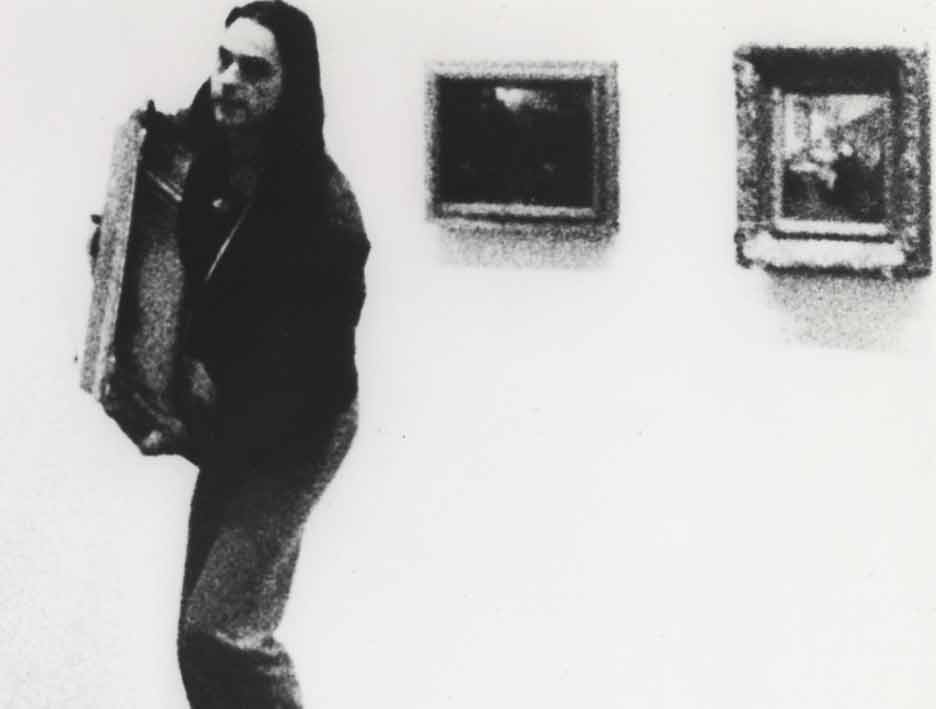
Ulay There is a Criminal Touch to Art 1976
Interview
Not Reckless but Reckful
Ulay Interviewed by Dominic Johnson
The Slovenia-based performance artist, one of the most influential in the field – best known in the UK for his collaborative work with Marina Abramović – discusses car crashes, cancer and criminal pursuits, plus how to endure while continually flipping personas.
No, I’m not an escape artist. I’m not escapist. True, in the Berlin Action, I had to escape, sometimes you have to run to make it. The Berlin Action wasn’t escapist, but I had to try to escape – and with good reason. Otherwise, no, I don’t escape because I don’t have fear.
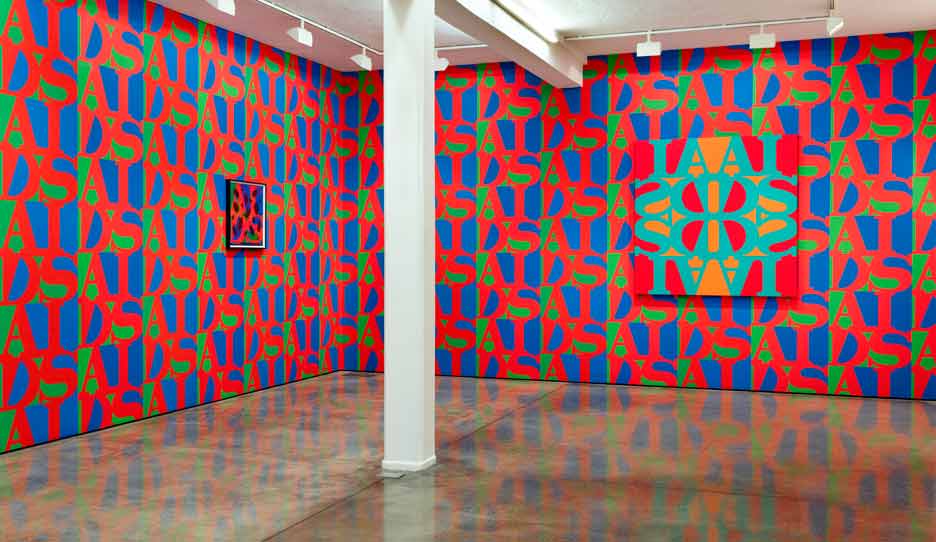
AA Bronson + General Idea installation view at Maureen Paley 2018
Feature
Love AIDS Riots
Chris McCormack on Art, Activism and AIDS
The recent surge of interest in 1980s AIDS activists, such as ACT UP, General Idea and Gran Fury, shows how art can effect real change. Looking back also reveals how narrow current definitions of healthcare are and encourages us to agitate for a more diverse future.
It is the political and ideological dimensions of the AIDS epidemic that separates it from other health crises and concerns. As Simon Watney noted in his 1987 book Policing Desire, ‘the British government’s ban on gay materials coming from the US until late 1986 meant, in effect, that people in the UK were legally prohibited from learning about AIDS during a crucial period’.
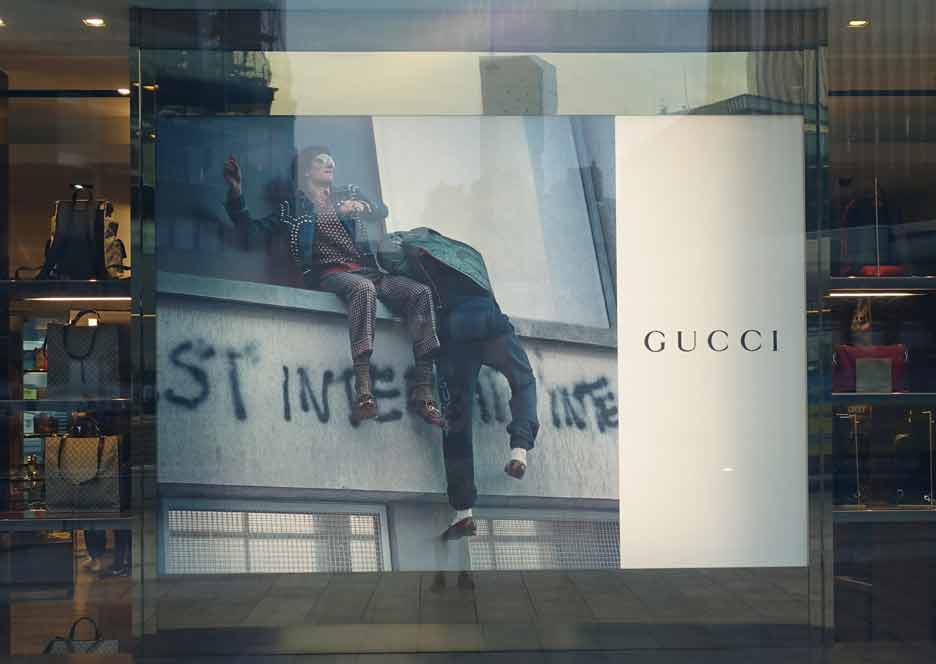
Gucci shop window, Japan, 2016
Feature
Roll Over SI
Situationism is Done, Argues Paul Walsh
Recuperated, incorporated and mummified, the Situationist International has been done to death. Instead of continually revisiting Guy Debord’s ephemera, couldn’t we focus on SI-influenced artists and collectives, such as Vincent Meessen and The Institute for Infinitely Small Things, to be inspired by SI’s ambition rather than its archive?
Looking back, we might trace the dawning outline of recuperation to the 1962 split between the so-called artistic and political factions of the SI, heralded by Raoul Vaneigem’s gnostic assertion that ‘the Situationist project could not be the creation of a spectacle of refusal but must entail refusing the spectacle’, a verdict that proves the situationists were more at war with themselves than ‘with the existing culture’ at large.
Comment
Editorial
Another Fine Mess
It was fitting that Parliament debated Theresa May’s doomed Brexit bill the same week that the new Oliver & Hardy biopic Stan & Ollie was released – there are tragicomic parallels between the two. More usefully, however, as artists such as Steve McQueen know, there are still lessons to be learned from century-old cinema.
85% of YouTube viewers ‘liked’ the silent-era classic. Perhaps the silence, the brilliance of the stunt’s execution, and the clarity of black and white, are appealing to a generation that has been subjected to so much party political rhetoric, media speculation and obfuscation.
Artnotes
McMolotov
The Haifa Museum of Art in Israel has caused a riot for showing Jani Leinonen’s 2015 artwork McJesus, and received only disdain from the artist over the issue of Palestinian rights; New York’s Whitney Museum is under pressure after it was revealed that a board member is also an arm’s dealer; Kunstmuseum Wolfsburg is keeping tight-lipped about why it has sacked its director, Ralf Beil, but his proposed exhibition about art in the petrol age may have spooked the museum’s sole sponsor, Volkswagen; the #MeToo movement in India is continuing to trigger art-world resignations, most recently Sotheby’s Gaurav Bhatia and artist Subodh Gupta; new UK research shows just how damaging unpaid work can be to arts interns, even after they have gained paid employment elsewhere; plus the latest news on galleries, appointments, prizes and more.
Obituaries
Robert Morris 1931-2018
Mark Prince
Carol Rhodes 1959-2018
Martin Holman
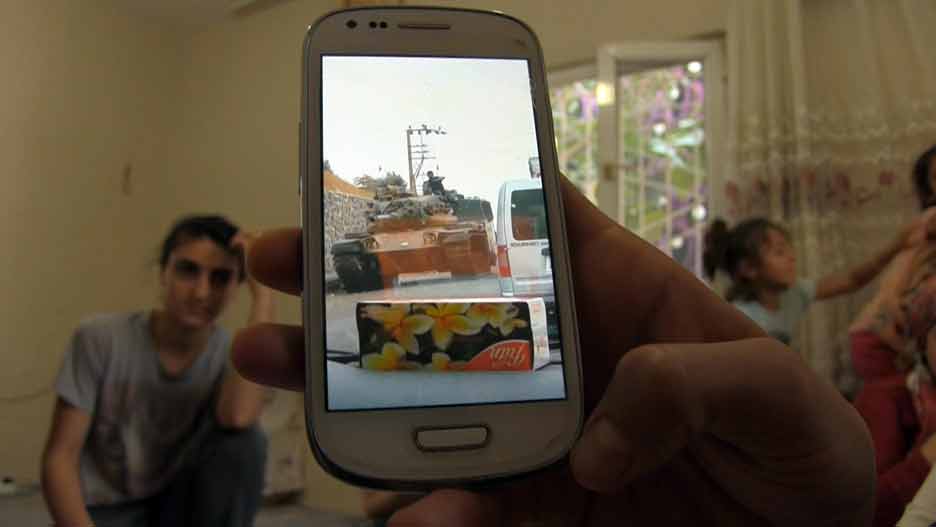
belit sag Sep-Oct, 2015, Cizre 2015
Profile
belit sag
George Vasey considers how violence operates in the moving-image work of the Turkey-born and Amsterdam-based artist.
The film Cannibals lays bare how feminist demands for equality and autonomy in economic and social life are currently marketed as personal lifestyle choices that enmesh individual dis-ease in a cycle of reward and punishment.
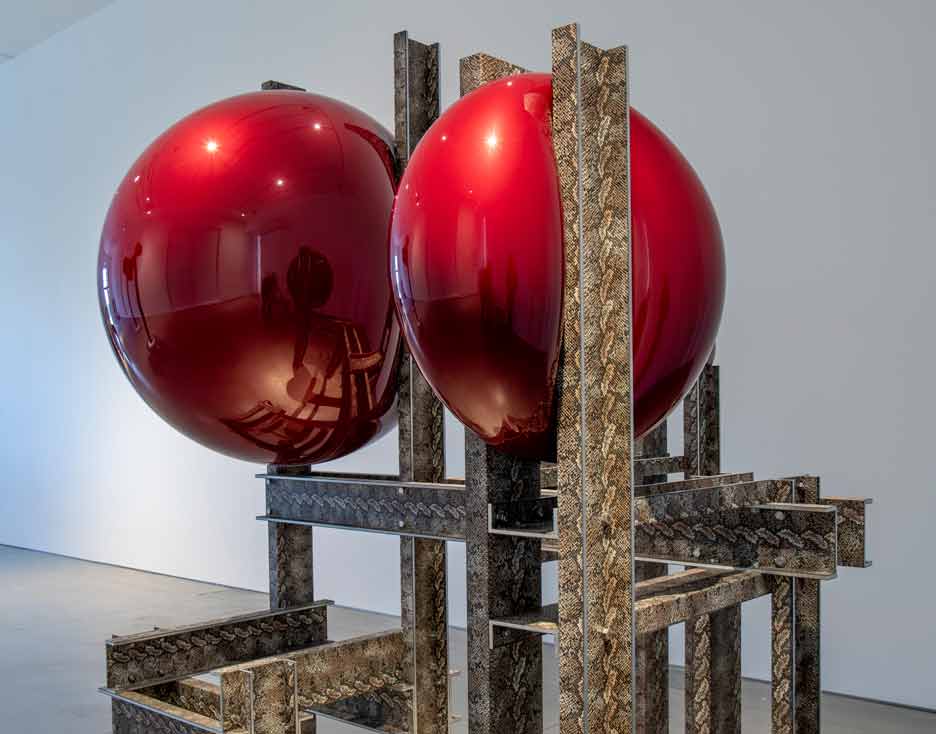
Siobhán Hapaska Snake and Apple 2018
on show at John Hansard Gallery
Exhibitions
Siobhán Hapaska
John Hansard Gallery, Southampton
David Barrett
Meiro Koizumi: Battlelands
White Rainbow, London
Amy Luo
Cady Noland
MMK, Frankfurt
Tim Steer
Haroon Mirza: reality is somehow what we expect it to be
Ikon, Birmingham
David Trigg
David Raymond Conroy: Retail Space
Seventeen, London
Andrew Hibbard
Amie Siegel: Backstory
Thomas Dane Gallery, London
Paul Carey-Kent
Ceal Floyer
Lisson Gallery, London
Duncan Wooldridge
Forms of Address
Laure Genillard, London
Tom Emery
Journeys with the Initiated
Participant Inc and e-flux, New York
Catherine Spencer
The Ground Beneath Your Feet
Castlefield Gallery, Manchester
Bob Dickinson
Penny Woolcock: Fantastic Cities
Modern Art Oxford
Ellen Mara De Wachter
Josephine Pryde: In Case My Mind is Changing
Simon Lee, London
Isobel Harbison
Reviews
Sound
Huddersfield Contemporary Music Festival: Christian Marclay
David Briers
This was the first time in 40 years that someone so predominantly active within the visual arts sector had been accorded this leading role.
Reviews
Books
Ghost-haunted land: Contemporary art and post-Troubles Northern Ireland
Chris Clarke
A useful primer on the Good Friday Agreement and, particularly, the intentional vagueness of its language as a way of appeasing two oppositional camps, sets the tone for a text that proposes Northern Ireland as distinctly unsettled, disjointed and in flux.
Books
Gary Indiana: Vile Days 1985-1988
Dan Ward
As a document reflecting on both the aforementioned period and current art criticism, however, this collection could not be more timely: funny, caustic, irreverent, sentimental, welcoming to the uninitiated yet rigorous all the same.
Reports

Saul Villaas Original and Copy 2018
Letter from Zacatecas
Mixed Blessings
Agnieszka Gratza
‘After the Biennale’, as the symposium was titled, dealt with the aftermath of a biennale – what stays behind once the event is officially over and the infrastructure gone.
Artlaw
Ways of Working
Authentication
Henry Lydiate
Establishing authenticity of works by deceased artists is an understandable risk. But in recent times fake works purported to be by Kazimir Malevich, Salvador Dali, Mark Rothko, Jackson Pollock, Robert Motherwell, Andy Warhol – even Damien Hirst and Banksy – have been fraudulently traded as authentic.
Listings
Events
Calendar
The updated events and exhibitions calendar can be viewed online.
Exhibitions
Exhibition Listings
Art Monthly's exhibition listings can be viewed online.

